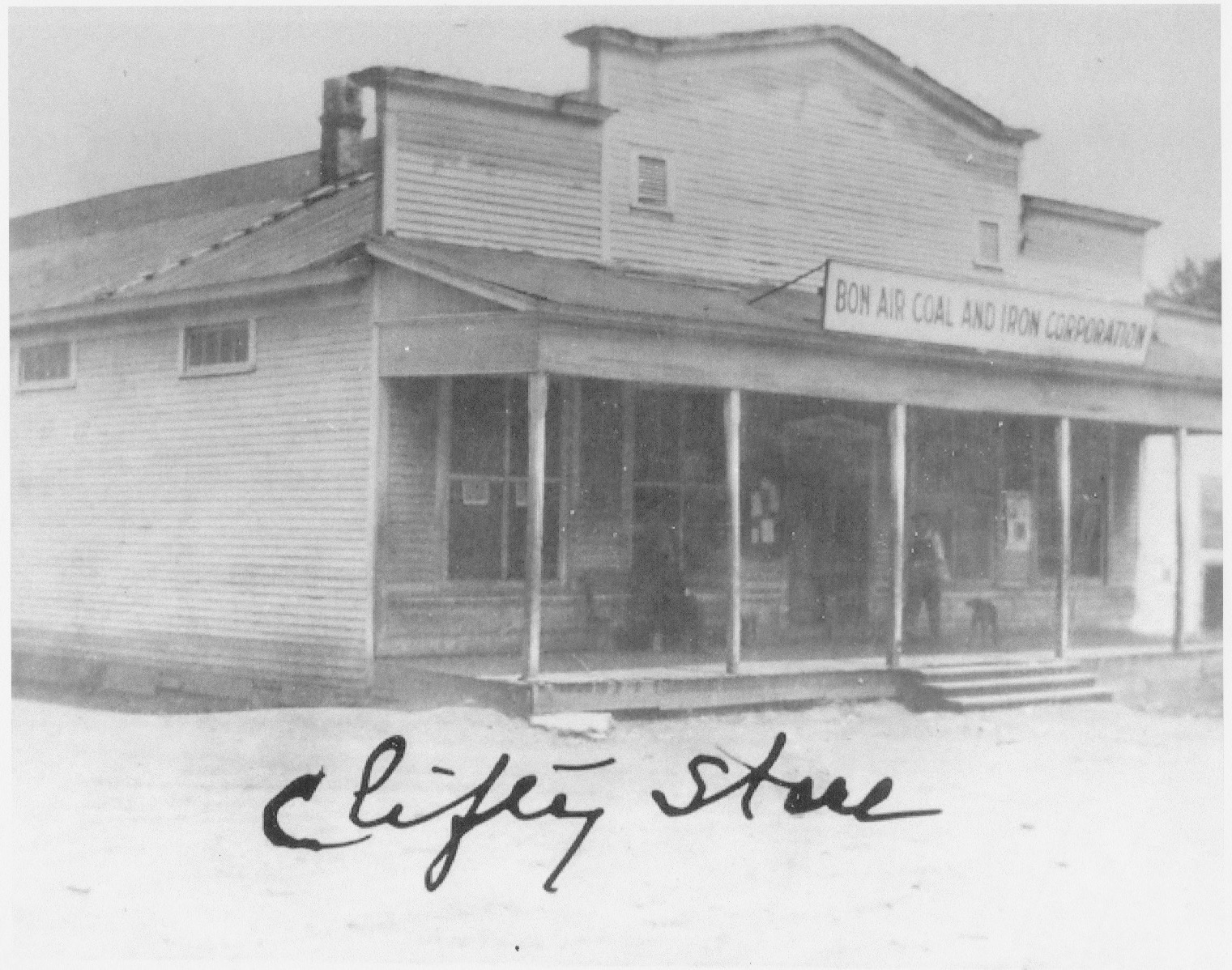The Clifty Coal Company began construction of the Clifty Mine in 1903 with Dr. William Byrd Young named as the general manager. Clifty’s first coal was shipped in 1904. The mine prospered and produced an average of 500 tons of coal per day. The town of Clifty was incorporated and received its charter in 1905. The charter provided for a mayor, alderman, recorder, and policemen and conferred authority for the governing body to adopt ordinances for residents to abide by. In 1919, the Bon Air Coal and Iron Cooperation purchased the Clifty Consolidated Coal Company for $25,000 Dr. Young remained as manager and also accepting the responsibilities of company vice-president.
Clifty was similar to the other coal mining communities. The coal companies owned a general store known as the “company store”, a company office known as a “check office”, and a jail known as a “calaboose”. They also had a barbershop and an occasional butcher shop when fresh meat was available. Clifty took great pride in having a school, churches, a clubhouse and a ballpark. Each company also had its own money that was used to pay the miners. Paper money was known as “Scrip” and “Clatter” was a type of metal coin.
Clifty’s business streets were on both sides of the railroad tracks and the residential areas extended off them in a semi-block formation. The residential streets in Clifty had wooden sidewalks. The buildings in Clifty were painted red while Bon Air buildings were whitewashed.
Dr. Young’s home which was know as Pilot Knob, overlooked the railroad, depot and the town on one side and the beautiful mountain laurel covered scenery on the other. His family lived there from 1903 until 1917. Tennessee Governor John I. Cox was among the guests who were entertained at Pilot Knob.
From Dr. Young’s “Our Family Tree”, he wrote:
“Clifty was indeed a desirable place in which to live, with a splendid nine months school, a large Union Sunday School, church organizations, a number of fraternal orders, and an unusually moral atmosphere with a community spirit unsurpassed. In the long years of its existence never did the company pay one cent, or even advance a cent for transportation to get employees, for on their application list there were always good men with families seeking employment. The policy of the officials of the Company was such, and the advantages to be obtained by living in the town were so good, that many among the best class of miners applied for work. For several years the miners ran a Community Farm of more than one hundred acres, each miner having an acre, some few two or more acres, but all under one fence, and supervised by the Progressive Farmers Club. It gave them an opportunity to improve their time and pocket books on days mines were idle.
During the 45 years that coalmines have been operated on Bon Air Mountain, there have been maintained large commodious two-story school buildings in each mining town. The lower stories were used for the schools and the upper stores for the following lodges: Masonic, Odd Fellows, Knights of Pythias, and the Red Men. The school buildings were used for church purposed by all denominations. All the dwellings are built on amply large lots and enclosed by fences and a nice front yard.”
In 1919, labor unions began to push to organize coal miners. In addition, a nation-wide slumping economy and the replacement of hand-operated mining equipment with mechanized machinery caused mining to be less profitable. The final blow to the mining industry came with the beginning of the Great Depression.
In 1924, the Clifty mines closed.Clifty is described by “Tennessee: A Guide to the State” which was complied and written by the Federal Writers’ Project of the Works Projects Administration for the State of Tennessee in 1939 as “…..a town of about a square mile. The site was formerly in Cumberland County but when Tennessee Products Corporation began mining operations in Clifty, it bought the land and added it to its other White County holdings. In recent years, the two counties have reached an agreement and now the county line runs through the center of town.”




